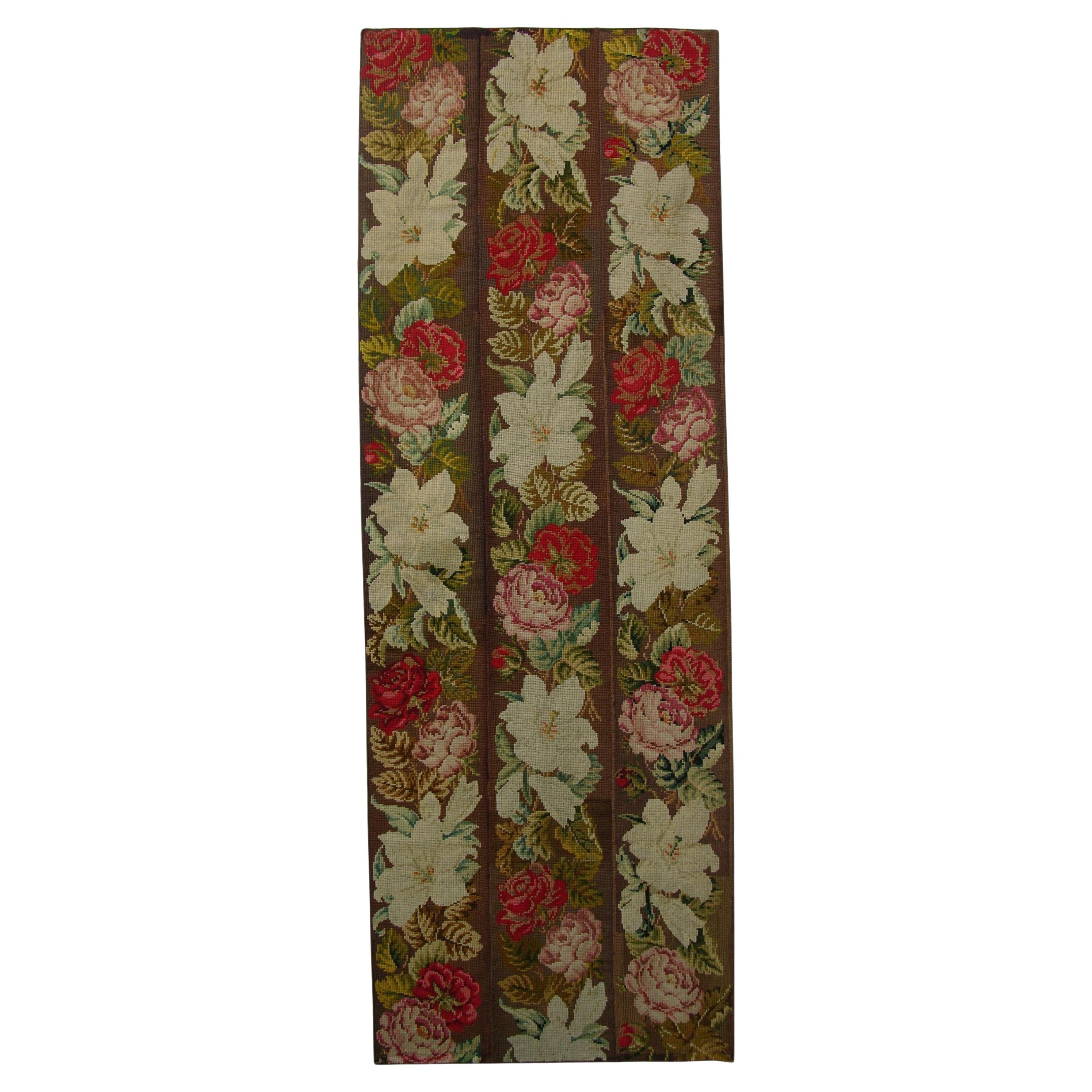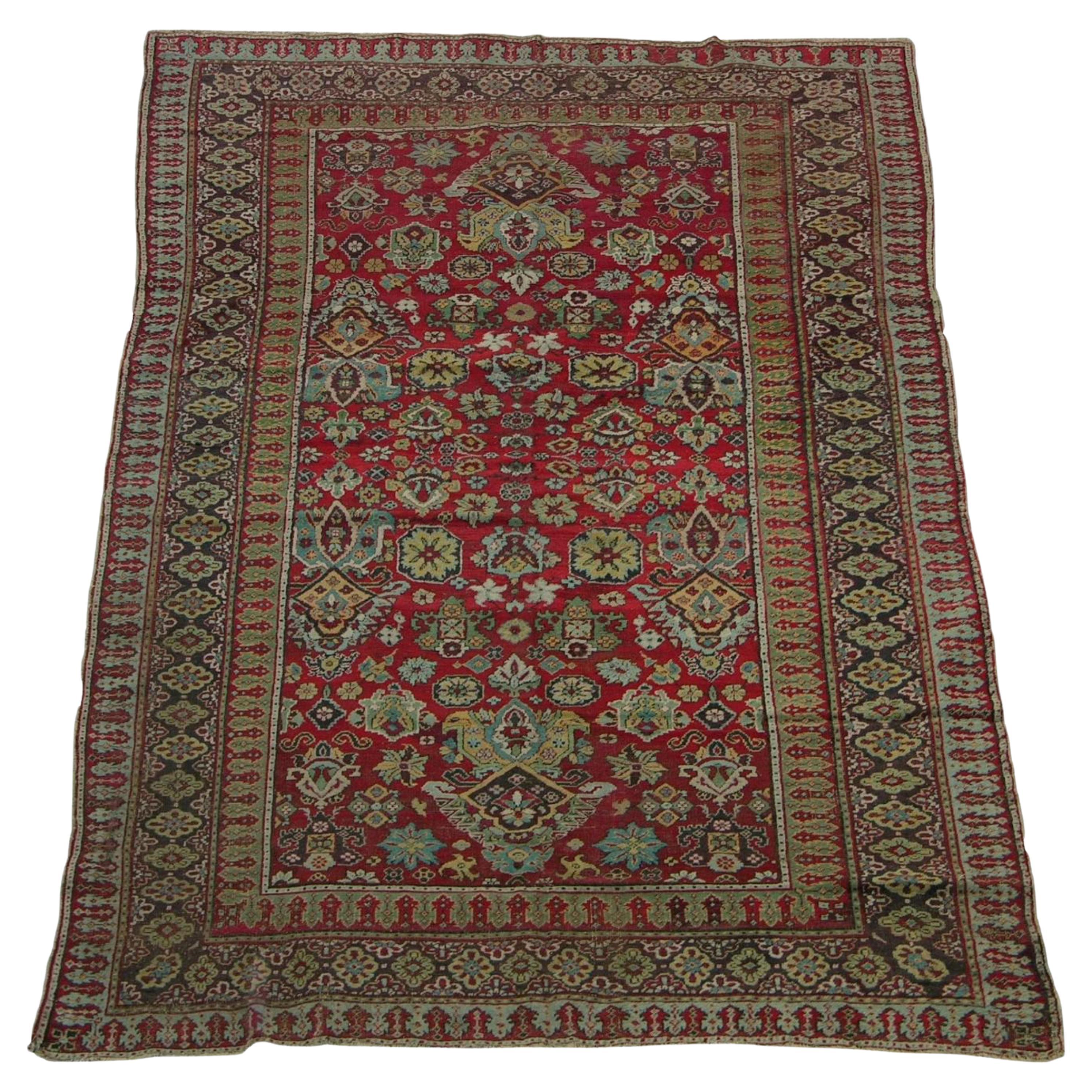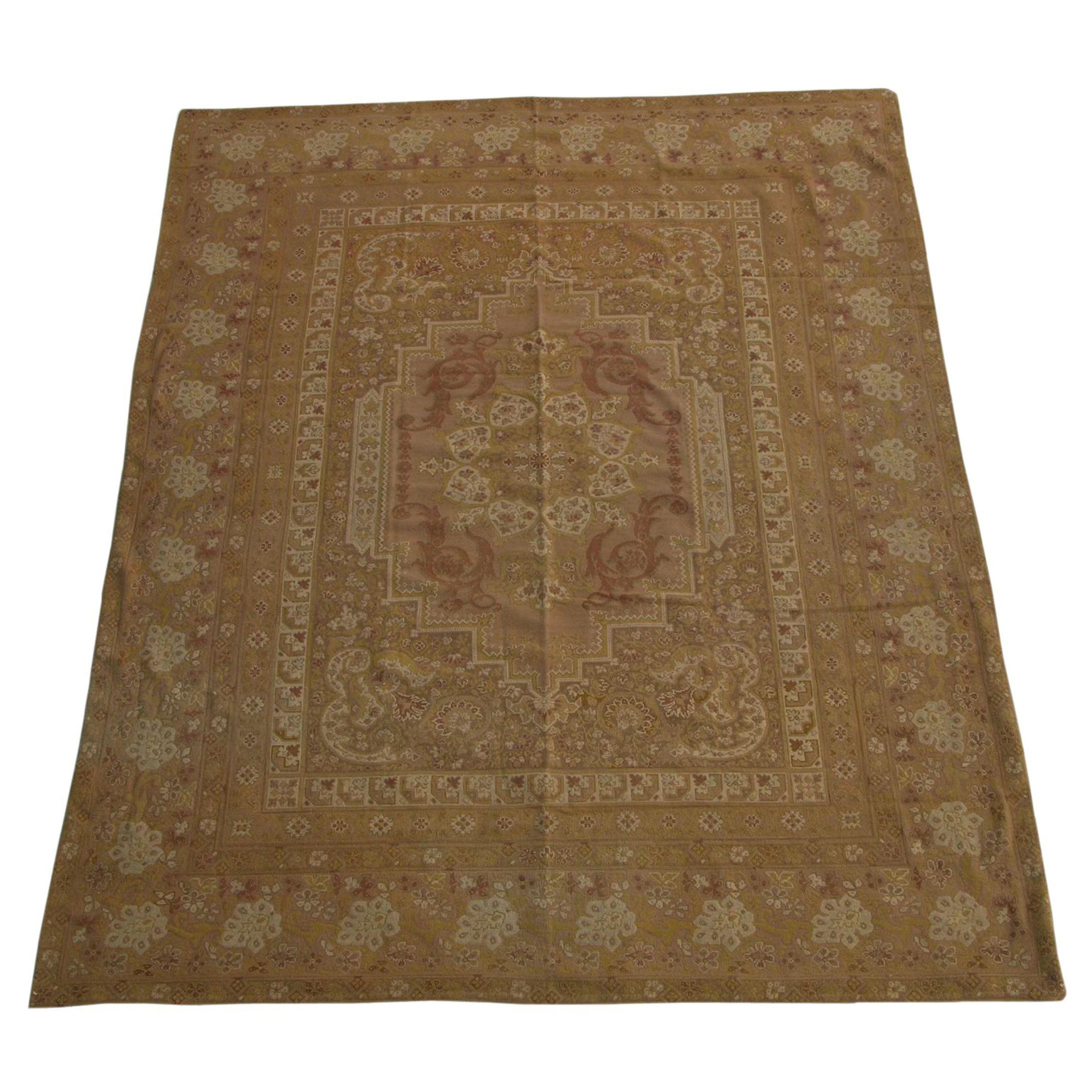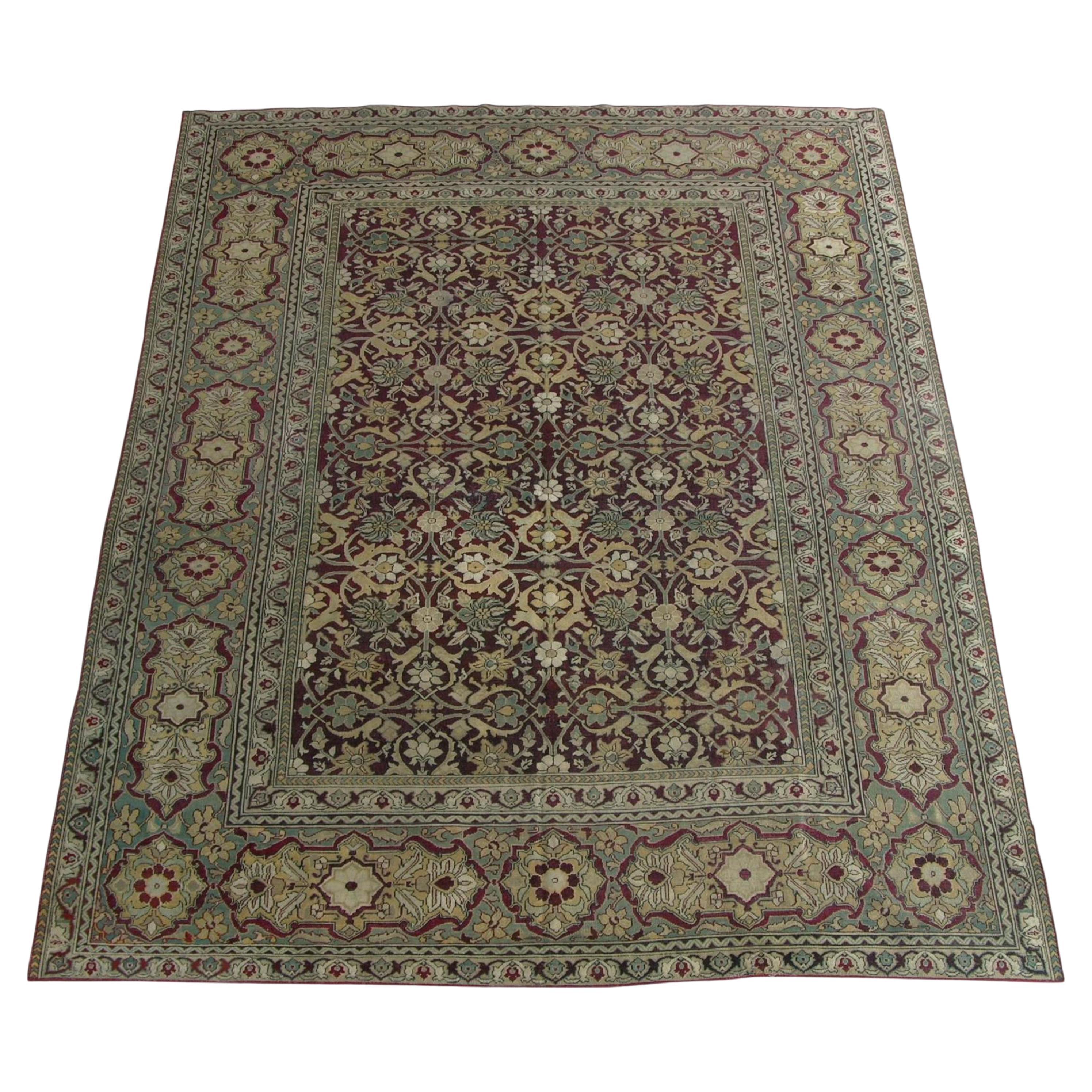Items Similar to Rug Designed by Emma Salzman, Finland, Early 1900s
Want more images or videos?
Request additional images or videos from the seller
1 of 6
Rug Designed by Emma Salzman, Finland, Early 1900s
About the Item
Rug designed by Emma Salzman,
Finland, early 1900's.
Rya technique. Handwoven wool.
Measurements:
H: 349 cm/ 11' 5 7/16"
W. 185 cm/ 6 26/32"
- Creator:Emma Salzman (Designer)
- Dimensions:Width: 72.84 in (185 cm)Length: 137.41 in (349 cm)
- Style:Scandinavian Modern (Of the Period)
- Materials and Techniques:Wool,Hand-Woven
- Place of Origin:
- Period:1900-1909
- Date of Manufacture:1900
- Condition:Wear consistent with age and use.
- Seller Location:Stockholm, SE
- Reference Number:1stDibs: LU1006615425902
About the Seller
5.0
Recognized Seller
These prestigious sellers are industry leaders and represent the highest echelon for item quality and design.
Gold Seller
These expertly vetted sellers are highly rated and consistently exceed customer expectations.
Established in 1998
1stDibs seller since 2013
186 sales on 1stDibs
Typical response time: 1 hour
- ShippingRetrieving quote...Ships From: Stockholm, Sweden
- Return PolicyA return for this item may be initiated within 2 days of delivery.
More From This SellerView All
- Rug, Designed by Impi Sotavalta, Flat weave rug, Finland, 1930sBy Impi SotavaltaLocated in Stockholm, SERug, designed by Impi Sotavalta, Finland, 1930s. Flat weave rug. Dimensions: L: 299 cm / 9’ 9 1/4’’ W: 190 cm / 6’ 2 3/4’’Category
Early 20th Century Swedish Mid-Century Modern Russian and Scandinavian Rugs
MaterialsFabric
- Rug Designed by Greta Skogster-Lehtinen for Aaltosen Mattokutomo, Finland, 1930sBy Greta Skogster-Lehtinen 1Located in Stockholm, SERug designed by Greta Skogster-Lehtinen for Aaltosen Mattokutomo, Finland, 1930s. Flat weave. Crafted in Finland by Aaltosen Mattokutomo in the 1930’s, Greta Skogster-Lehtinen desi...Category
Mid-20th Century Finnish Mid-Century Modern Russian and Scandinavian Rugs
MaterialsWool, Linen
- Rug, Anonymous, Finland, 1930'sLocated in Stockholm, SEHandwoven wool. Measures: L: 330 cm / 10’ 9 3/4" W: 196 cm / 6’ 5 1/2".Category
Mid-20th Century Finnish Mid-Century Modern Russian and Scandinavian Rugs
MaterialsWool
- Rug Designed by Helene Lindberg, Sweden, 1931Located in Stockholm, SERug, designed by Helene Lindberg. Sweden. 1931. Wool. Kelim technique. Signed HL31. Measurements: L: 215 cm / 7' 1'' W: 111 cm / 3' 8''Category
Vintage 1930s Swedish Scandinavian Modern Russian and Scandinavian Rugs
MaterialsWool
- Rug designed by Anna-Greta Sjöqvist, Sweden, 1950s.By Anna-Greta SjöqvistLocated in Stockholm, SERug designed by Anna-Greta Sjöqvist, Sweden. 1950s. Pure wool. Kelim technique. Measurements: L: 244 cm/ 8'' W: 180 cm/ 5' 11''Category
Vintage 1950s Swedish Scandinavian Modern Russian and Scandinavian Rugs
MaterialsWool
- Rug, Designed by Antonin Kybal, Czech Republic, 1950sLocated in Stockholm, SERug, designed by Antonin Kybal, Czech republic. 1950's. Kelim technique. Hand-woven wool. Measurements: H: 393 cm/ 12' 10 23/32" W: 280 cm/ 110 7/32"Category
Vintage 1950s Swedish Scandinavian Modern Russian and Scandinavian Rugs
MaterialsWool
You May Also Like
- 1900s Antique Needlework Floral DesignLocated in Los Angeles, USNeedlepoint rugs were created using the traditional needlework weaving technique that is used to make everyday items from furniture to carpets and artwork. However, it has a fascinat...Category
Antique Early 1900s Other Russian and Scandinavian Rugs
MaterialsWool, Cotton
- 1900s Antique Animal Samarkand RugLocated in Los Angeles, USAntique Samarkand Rugs: The desert oasis of Khotan was an important stop on the Silk Road. The people of Khotan were expert carpet weavers who produced high quality antique rugs and ...Category
Antique Early 1900s Asian Tribal Russian and Scandinavian Rugs
MaterialsWool, Cotton
- 1900s Antique Indian Amritsar RugLocated in Los Angeles, USAntique Amritsar Rugs: - The spectacular rugs of Amritsar capture the exotic style of India while incorporating a subtle colonial influence. This convergence of eastern and western s...Category
Antique Early 1900s Asian Other Russian and Scandinavian Rugs
MaterialsWool, Cotton
- 1900s Antique French Needlepoint RugLocated in Los Angeles, USNeedlepoint rugs were created using the traditional needlework weaving technique that is used to make everyday items from furniture to carpets and artwork. However, it has a fascinating history both as a hobby and as an industry. When many people think of carpets, they think of pile carpets or flat weave kilims, but needlepoint has also been used to create beautiful carpets. These carpets are durable and an important part of carpet history. Archaeologists and scholars consider the roots of needlepoint to have been around 1500 BC. They consider the first needlepoint to include the fine diagonal stitches that were used to sew tents together by the ancient Egyptians. The art eventually evolved into tapestry weaving. However, a tapestry weaving differs significantly from needlepoint in that it uses a loom and vertical warp. Tapestry weaving is closer to the weaving of kilims and pile rugs than canvas work. However, some still include tapestry weaving in the category of needlepoint because of the fine work that appeared during the late Renaissance. It can have a similar appearance to the untrained eye. Technically, tapestry weaving and needlepoint are not the same, and they do not use the same technique. The first actual needlepoint rugs and needle-points began to appear in the late Renaissance. Needlepoint is worked by creating stitches on a stiff canvas. The canvas is typically made from jute or linen and is quite durable. Pieces from the Renaissance were used to cover footstools, chairs, pillows, bed headboards, and other furnishings. They were also used as table coverings and wall coverings. You could also find them on many small items such as purses, shoes, and various adornments for clothing. During the Renaissance, the craft reached a high level of skill, and the designs became incredibly detailed and realistic. They mimicked many of the subjects and styles of famous paintings of the time. They created florals, still life designs, scenes, and geometric tiled pieces. Some of them mimicked the designs found in Persian Carpets. Needlepoint reached its peak popularity in the 19th century when it was considered a proper occupation for a lady. Needlepoint and embroidery held a similar place in societal status at the time. During this time, the work became finer, with some of the canvas reaching a high level of detail. The level of detail is determined by counting the number of mesh in an inch. During this time petit point by French needlewomen could have a mesh count as high as 45 mesh. This allowed women to create highly intricate designs with incredible levels of detail. It is possible to find many antique pieces of needlepoint besides rugs. Needlepoint rugs were popular in France and Spain, where the technique was adapted to create highly intricate designs that mimicked the designs in architecture and fashion. They were popular because they were durable, and it could be fashioned into a variety of items. The canvases themselves were durable, and the wool that they used was also strong, which means that many of the pieces were able to withstand daily use. We have many artifacts that have survived from this time period. Needlepoint rugs are important collectibles because they are different from the pile rugs and kilims that are typically found on the market. Needlepoint carpets are special because they take many hours to create, especially larger works. Needlepoint pieces of any type became popular throughout Europe during the 19th century. It is still a popular hobby today, but perhaps one of the most interesting stories is that of the Portuguese needlewomen of Arraiolos. The story of these women and their beautiful carpets begins in 1492. Needlepoint was a popular occupation in Spain, which had a large population of Moors and Jews. They were an integral part of Spanish culture. However, in 1492, Queen Isabella of Spain issued a proclamation that gave these ethnic groups the order to pack their bags and board ships headed...Category
Antique Early 1900s Other Russian and Scandinavian Rugs
MaterialsWool, Cotton
- 1900s Antique Indian Amritsar RugLocated in Los Angeles, USAntique Amritsar Rugs – The spectacular rugs of Amritsar capture the exotic style of India while incorporating a subtle colonial influence. This convergence of eastern and western styles results in an exceptionally alluring appearance that has been beloved by western consumers historically and today. The outstanding old Amritsar carpets were created by influential exporters to fuel the demand for exotic rugs...Category
Antique Early 1900s Asian Other Russian and Scandinavian Rugs
MaterialsWool, Cotton
- 1900s Antique Khotan Samarkand RugLocated in Los Angeles, USAntique Samarkand Rugs: The desert oasis of Khotan was an important stop on the Silk Road. The people of Khotan were expert carpet weavers who produced high quality antique rugs and ...Category
Antique Early 1900s Other Russian and Scandinavian Rugs
MaterialsWool, Cotton
Recently Viewed
View AllMore Ways To Browse
Antique Scandinavian
Scandinavian Antique
Antique Scandinavian Furniture
Scandinavian Antique Furniture
Scandinavian Furniture Antique Furniture
Scandinavian Furniture Antique
Antique Modern Bedroom Design
Antique Scandinavian Design Furniture
Finnish Rug Finland
Finnish Rug
Finland Rug
Finland Carpets
Finnish Rug Wool
Antique Finland
Antique Scandinavian Rugs
Antique Scandinavian Carpets
Scandinavian Finnish Rug
H 185





